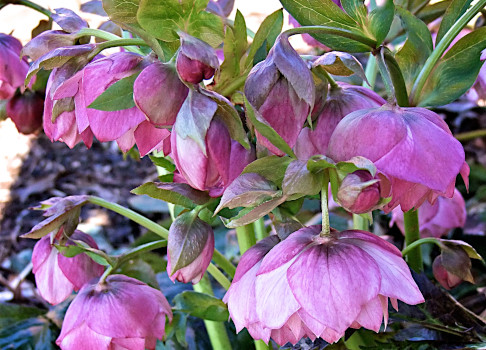Top 10 Perennials For 2021
Top 10 Perennials For 2021
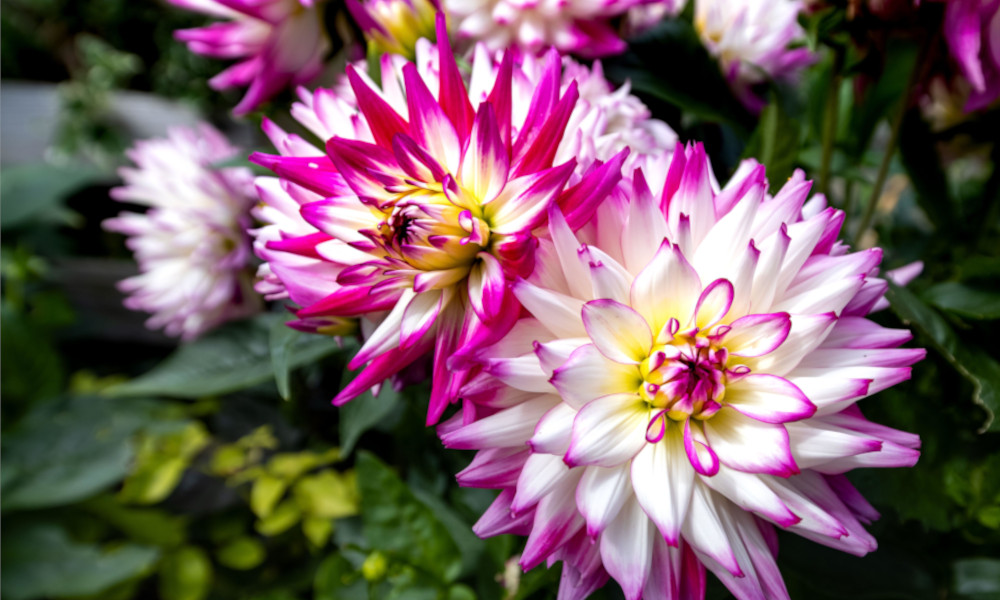
Perennials are the mainstay of the garden, simply defined as a plant that lives for more than two years, they are considered the ‘reliables’. The clue is in the name after all!
That certainly shouldn’t mean that they are boring. Even perennials grown for their foliage can be full of colour, texture and even scent.
Pop the kettle on and join us to discover our top 10 recommended perennials for interest through the seasons and we will tell you why they are such brilliant investments for the garden.
10. Geum
With their delicate, petticoat-like petals in an assortment of colours from soft pastels to hot tropical oranges and reds and often named after cocktails, these little beauties light up the borders for months on end from mid-spring.
‘Totally Tangerine’ is a real winner, on mid-height stems these citrus-coloured blooms provide a brilliant partner to so many other plants with their cheery pops of colour. Keep deadheading to ensure the plants look tip-top.
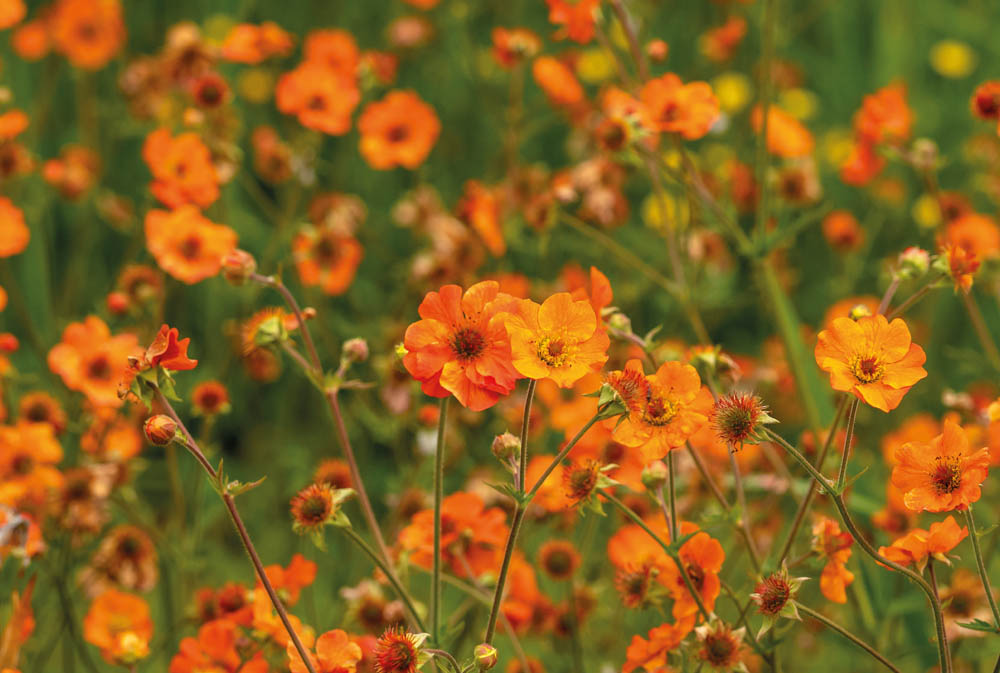
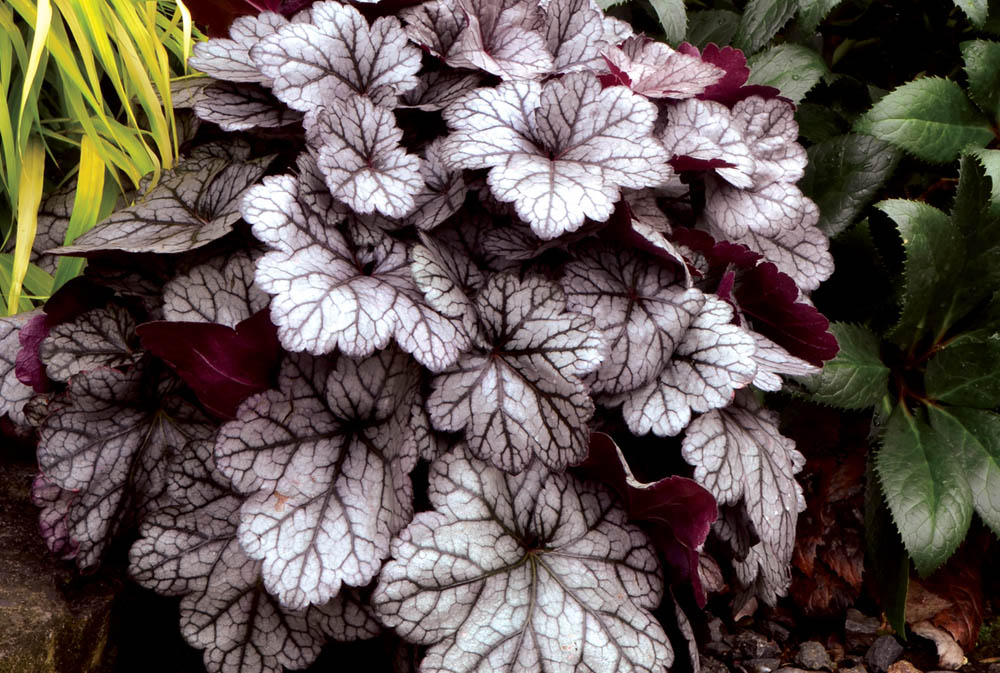
9. Heuchera
The lush and frilly leaves of the heuchera are as at home lining the edge of a border as they are tumbling over the sides of a pot.
Available in an array of colours, from zingy lime-green through to rich reds and deep black-purples like ‘Black Taffeta’. The delicate flower stems of heuchera Glitter rise up like sparklers in the garden after rainfall.
8. Philadelphus
The heady scent of the mock orange in early summer is sublime and is one joy that every garden shouldn’t be without. Often used as a backdrop to other plants as this shrub can grow quite large, with single or double flowers, each variety is scented slightly differently.
Try ‘Belle Etoile’ for its blousy white blooms with a delicate pink centre and heavenly perfume.
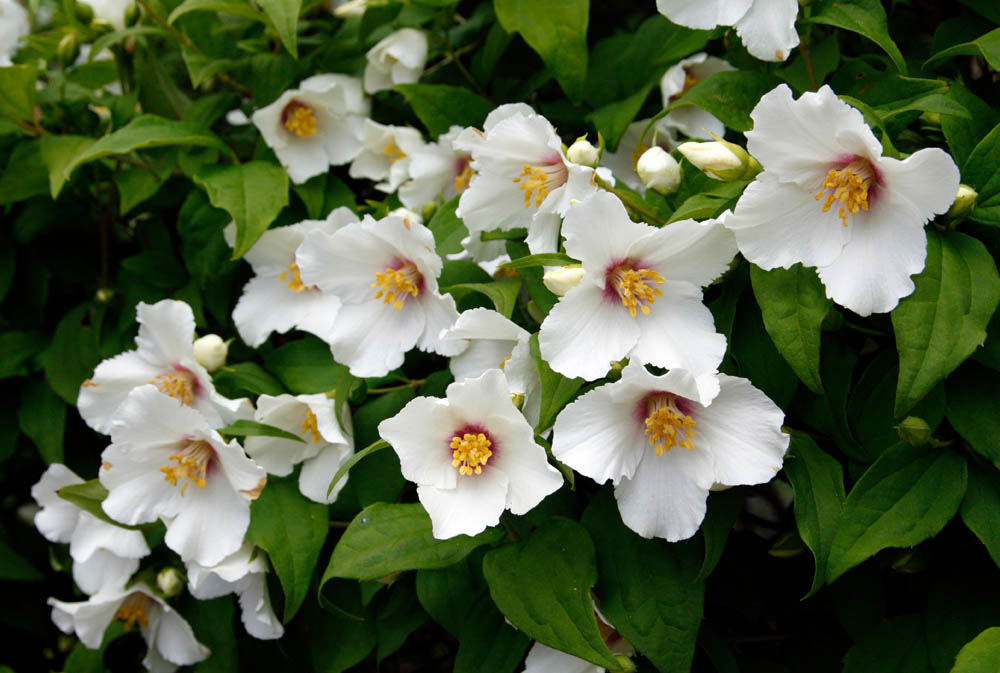

7. Penstemon
Also known as beardtongues, the bell-shaped blooms of penstemon, reminiscent of foxgloves, are a valuable addition to the garden. Unfussy and flowering for several months, these plants are a magnet to bees.
Deadheading stems after flowering will encourage a constant stream of flowers. Prune your penstemons fully in spring as last year’s growth will protect the new shoots from the worst of the winter frosts. ‘Dark Towers’ is an unusual beauty with soft pink blooms and almost black foliage.
6. Roses
From shrubs, to ramblers, to climbers, there is surely a place in every garden for a quintessential English rose? Roses will reward you with two flushes of blooms and some varieties will also provide beautiful hips in winter.
Be sure to prune according to variety, feed, and mulch well and pest problems should be few and far between. Perhaps choose one for nostalgic scent as well as beauty such as ‘Happy Birthday’, with soft apricot hued, cupped double blooms, this variety is also thornless and great in a pot.

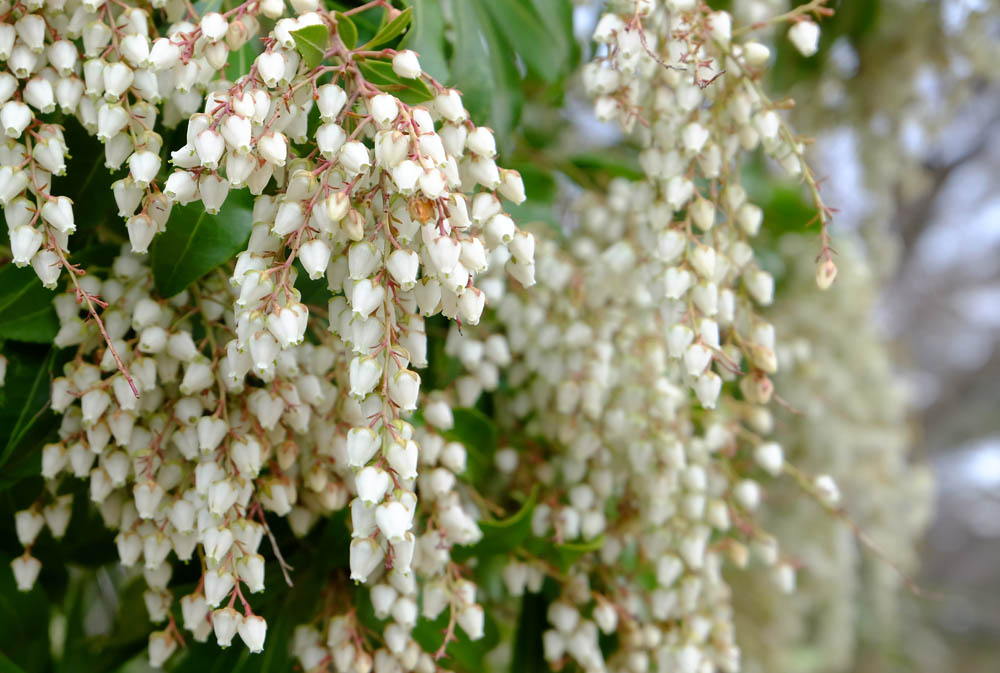
5. Pieris
Also known as Andromedas or Lily of the Valley bush, these showy shrubs hum with bees in Spring when the panicles of white (or sometimes pink) flowers hang from the plant.
The flowers are followed by hot-pink new foliage which fades to salmon in summer. A member of the Ericaceae family, the only requirement of these plants is that they are grown in acid soil, making them great in the mid to back border with camellias, azaleas, or heathers.
4. Japanese Anemone
Available in singles and doubles, and in shades of pink and white, Japanese Anemones belong to the buttercup family Ranunculaceae, and are actually native to China!
Easy to grow on most soil types, and preferring partial shade, once established Japanese anemones can spread rapidly via their rhizomes and can be easily dug and divided in Spring or Autumn, after flowering.
'Frilly Knickers’ is a pretty, double petalled variety in pure white and will put on a fantastic show of blooms from late summer and all through autumn.
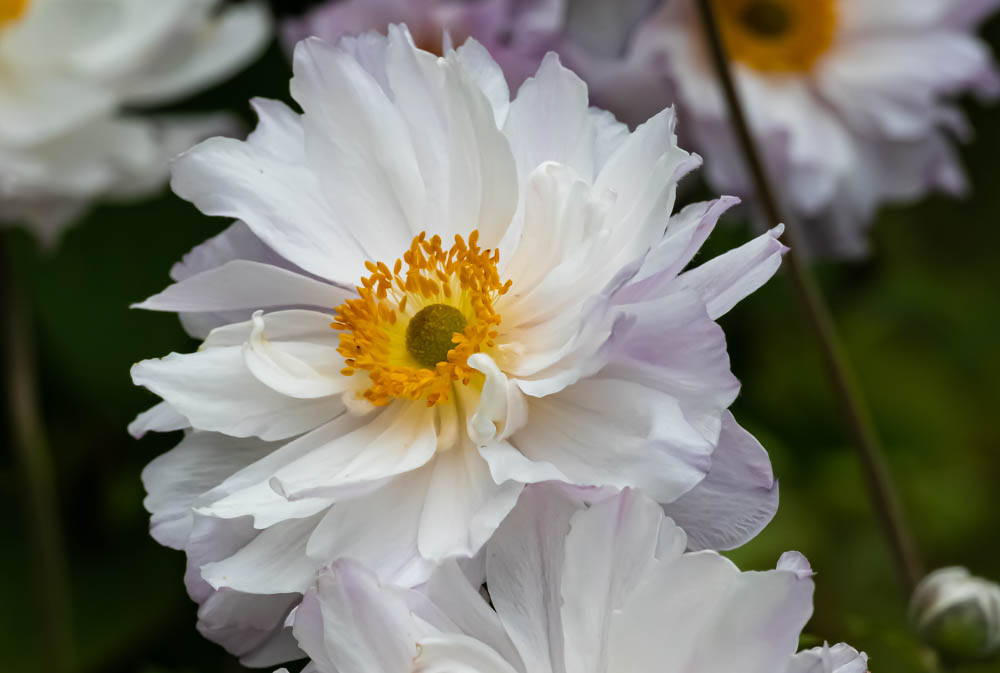

3. Dahlia
Hardworking, prolific bloomers in a huge range of colours and shapes, the dahlia is without doubt worthy of its place in the top 10! Dahlias are the autumn garden showstoppers.
Flowering from late July until the first frost, with regular deadheading and feeding you can be sure to pick many vases of flowers from one plant. Tubers can be lifted and stored over winter, or in warmer parts of the UK, left in the ground with a thick layer of mulch or straw for next year’s flowers. Single varieties such as ‘Happy Single Date’, although maybe not as long lasting in the vase as doubles are loved by pollinators and their simple, daisy shaped forms look fabulous planted alongside grasses and annual phlox.
2. Astrantia
A florist’s favourite, for their star shaped, twinkling flowers. The outer ‘petals’ are actually bracts, and the flowers are the tiny ‘pins’ in the centre. Ranging from creamy white to deep burgundy in colour, Astrantia, or ‘masterwort’ as it is often known has a long flowering period, thrives in dappled shade and is slug resistant.
Try ‘Astrantia major Roma’ for its neatly shaped dusky pink blooms in a shady border or under a tree.
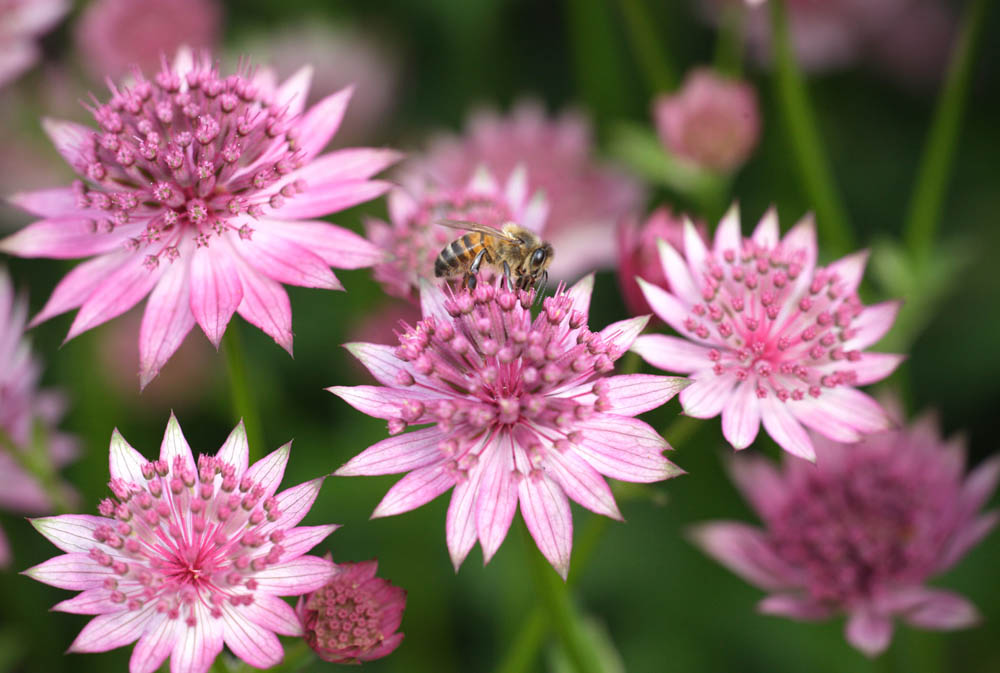
1. Hellebore
In late winter, the magical hellebore, or Lenten Rose is a welcome treat to discover flowering in the garden. It’s downward facing blooms are a rich source of nectar and pollen and you may sometimes find a sleepy bee in its petals when you inevitably turn it up for a peek!
Trim the leaves off as the flowers emerge to expose the flowers and keep the plant healthy. ‘Double Slaty Blue’ is a dramatic, almost black variety with double petals showing off its pale-yellow stamens inside. A classy combination for the winter garden.

